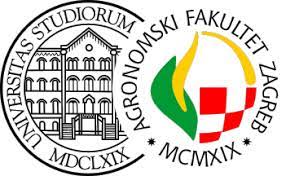2.1 Basic principles of plant protection in organic farming
Encouraging natural control mechanisms of the ecosystem through promotion of natural enemies
One of the main characteristics of natural ecosystems is the ability of self-regulation. These ecosystems exist completely without external influence and they provide a natural circulation of nutrients that allow the development of plants that serve as a source of food for various animals, insects and microorganisms. Species that live within the same habitat are in different interrelations where they have the roles of predators, parasitoids, prey, decomposers. Their relationships enable the self-regulation of ecosystems, which does not allow the population of one species increases so much that the sustainability of other species is disputed.
Modern agricultural production in which we often grow endless fields of the same culture, choose vigorous and yielding varieties, intensively fertilize with mineral fertilizers, and regulate the population of harmful organisms with effective plant protection products is completely contrary to the conditions of natural ecosystems. Various technological interventions eliminate all organisms from the "ecosystem" beside the culture we grow, both harmful and beneficial. In such circumstances, cultivated plants are very susceptible to pest attacks that have an inexhaustible source of food, and as we have removed all their natural enemies, their population can grow to the point of destroying the entire crop. Such production systems are completely unsustainable without the constant influence of man and the introduction of various inputs outside the farm.
Therefore, in organic farming, one of the main goals is to encourage the diversity of species in and around fields, and to create habitats attractive to natural enemies that will help to regulate pests. Moreover, it is desirable that organic farms are of a mixed type in order to avoid large areas under the same crop, and it is recommended that livestock farming is developed in addition to crop production.
Species diversity is encouraged by organizing different ecological infrastructures suitable for individual crops. Permanent habitats around fields, such as meadows, rocky areas, forests, lakes, etc., hedges and dry-stone walls along the edge of a field, flower strips and cover crops in vineyards and orchards serve as ecological infrastructure. Ecological infrastructure should provide food to natural enemies as well as shelter while there are no crops. Tall vegetation around the fields also serves as a barrier against the introduction of pests from the outside, prevents the drift of plant protection products, reduces wind gusts, etc. In addition, cover cropping has a positive effect on soil fertility, storage of water in the soil, while it prevents erosion and the harmful effects of direct sunlight and precipitation on bare soil. The choice of infrastructure needs to be adapted to the culture we grow to prevent potential negative impacts. The habitat of beneficial organisms can also be a habitat for pests or viral vectors where some plant species are alternative hosts to diseases of agricultural crops. Moreover, a competitive relationship for water and nutrients with cultivated plants should be avoided, as well as shading of the agricultural area.





